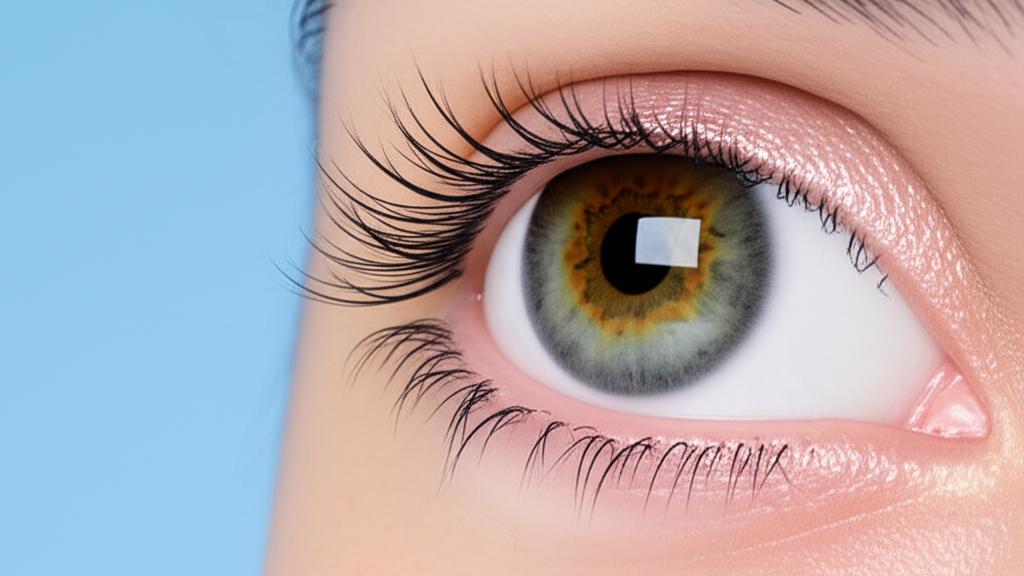Ever woken up, looked in the mirror, and seen a pair of red, itchy eyes staring back? Or maybe you’ve noticed a tiny, alarming red spot on the white of your eye? These common experiences often involve a very important, yet often overlooked, part of your eye: the conjunctiva. It’s a real workhorse, this little membrane, and I want to tell you a bit about it.
So, what is this conjunctiva I’m talking about? Well, imagine a super thin, totally clear layer – almost like the finest cling film. This delicate membrane does two main jobs: it lines the inside of your eyelids, and it covers the white part of your eye (what we doctors call the sclera). It’s a bit of a hidden guardian, really.
What Does the Conjunctiva Actually Do?
Think of your conjunctiva as your eye’s personal bodyguard and moisturizer, all rolled into one. Its main roles are:
- Protection: It’s a barrier, plain and simple. It helps keep out dust, pollen, and other everyday irritants that could bother the more sensitive parts of your eye.
- Lubrication: The conjunctiva produces mucus. Now, “mucus” might not sound glamorous, but this particular mucus is a key ingredient in your tears! It mixes with the watery part of tears (made by your lacrimal glands) and an oily layer (from your meibomian glands) to create the perfect tear film. This film keeps your eyes moist, comfortable, and seeing clearly.
Without a healthy conjunctiva, your eyes might feel dry, gritty, or become more prone to infections. It’s like having a raincoat with holes – things get in, and moisture gets out.
A Closer Look: The Conjunctiva’s Structure
It’s not just one single sheet. This useful membrane has a few distinct parts:
- Palpebral Conjunctiva: This is the part that lines the inner surface of your eyelids. You can’t see it without, well, flipping your eyelid (which we sometimes do during an exam!).
- Bulbar Conjunctiva: This is the section that covers the white sclera of your eyeball. It’s the part that can get red and inflamed when you have pink eye.
- Conjunctival Fornix: This is a clever little fold, a sort of cul-de-sac, where the palpebral and bulbar conjunctiva meet. It allows your eye to move freely without the lining pulling tight.
Common Conjunctiva Concerns You Might Encounter
Because it’s on the front line, the conjunctiva can sometimes run into trouble. The two things I see most often in my practice are:
- Pink Eye (Conjunctivitis): This is probably the most well-known conjunctiva issue. It’s an inflammation that can make your eye look pink or red, feel itchy or gritty, and sometimes produce discharge. What causes it? All sorts of things!
- Allergens: Pollen, dust mites, pet dander.
- Irritants: Smoke, chlorine in pools, a stray eyelash.
- Viruses: Often the same ones that cause colds. This type is very contagious.
- Bacteria: Can also cause very contagious infections, often with more pus-like discharge.
Treatment really depends on the cause. Sometimes it’s just soothing drops; other times, we might need antibiotic drops if bacteria are the culprits.
- Subconjunctival Hemorrhage: This sounds scarier than it usually is. It’s basically a tiny broken blood vessel on the surface of your eye. You’ll see a bright red patch on the white of your eye. It can happen from something as simple as coughing hard, sneezing, or even for no clear reason. Most of the time, these don’t hurt, don’t affect your vision, and clear up on their own in a week or two. Looks dramatic, but usually no big deal.
When to Worry: Signs Your Conjunctiva Needs Attention
It’s always best to get your eyes checked if something feels off. Keep an eye out for these symptoms:
- Redness or other discoloration that doesn’t go away.
- Persistent itching or a feeling like there’s sand in your eye.
- Any discharge – watery, stringy, or pus-like.
- New eye pain, especially if it’s more than just mild irritation.
- Sudden sensitivity to light.
- Blurred vision.
- Seeing double (what we call diplopia).
- Any noticeable worsening of your vision.
Keeping Your Conjunctiva Happy and Healthy
Taking care of your conjunctiva is mostly about good general eye care:
- Talk to your eye doctor: If you notice any of the symptoms above, or any changes in your vision, don’t wait. Get it checked out.
- Regular exams: If you wear glasses or contact lenses, stick to your recommended eye exam schedule. Your prescription can change, and it’s good to catch problems early.
- Protect your peepers: Wear safety glasses or goggles for sports, DIY projects, or any activity where something could fly into your eye. It’s such a simple thing, but so important.
- Contact lens hygiene: If you wear contacts, follow the cleaning and replacement schedule religiously. This helps prevent infections that can affect the conjunctiva.
If you experience severe eye pain or a sudden loss of vision, please head to the emergency room right away.
Take-Home Message: Understanding Your Conjunctiva
Here are the key things I hope you’ll remember about your amazing conjunctiva:
- It’s a thin, clear membrane covering the white of your eye and lining your eyelids.
- Its main jobs are protecting your eye and helping to produce the mucus layer of your tears for lubrication.
- Common issues include pink eye (conjunctivitis) and subconjunctival hemorrhages.
- See an eye care specialist if you have persistent redness, itching, discharge, pain, or vision changes.
- Good eye hygiene and protective eyewear help keep your conjunctiva healthy.
You might not think about your conjunctiva every day, but it’s working hard for you. So, let’s give it the care it deserves! If you’re ever worried about your eyes, please don’t hesitate to reach out to us. We’re here to help.
You’re doin’ great just by learning more about how your body works.


